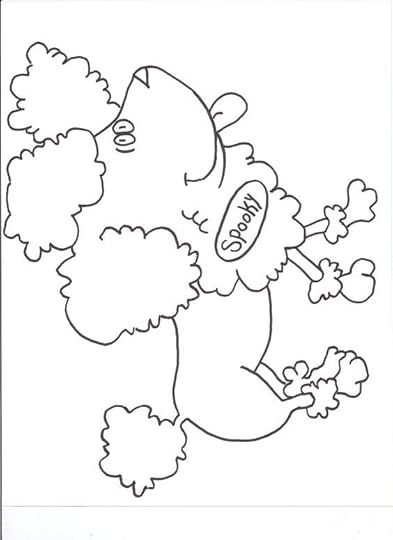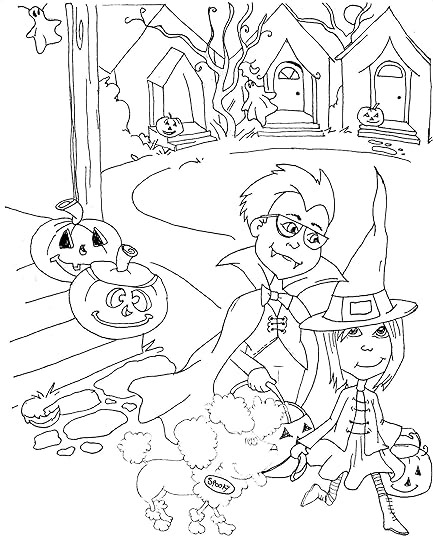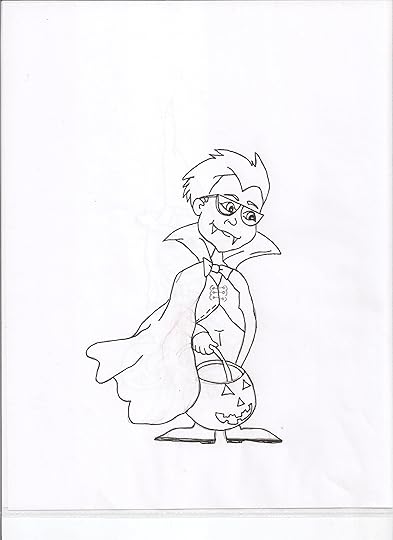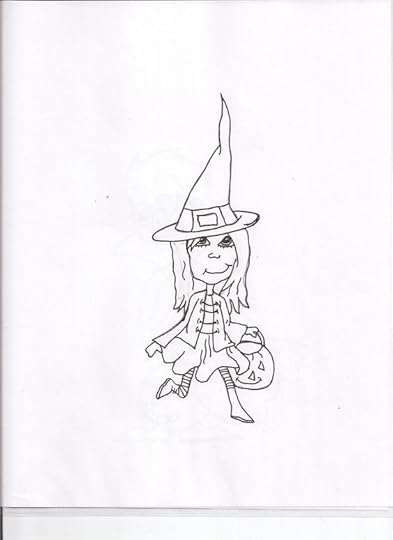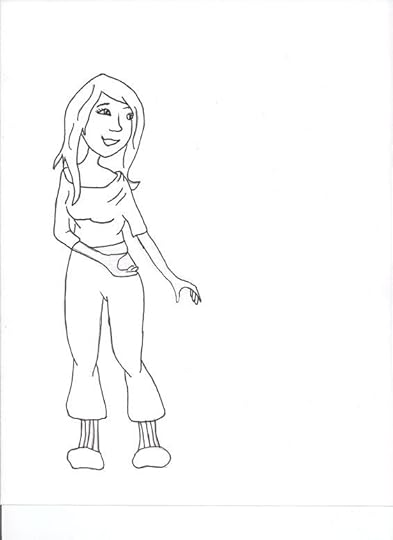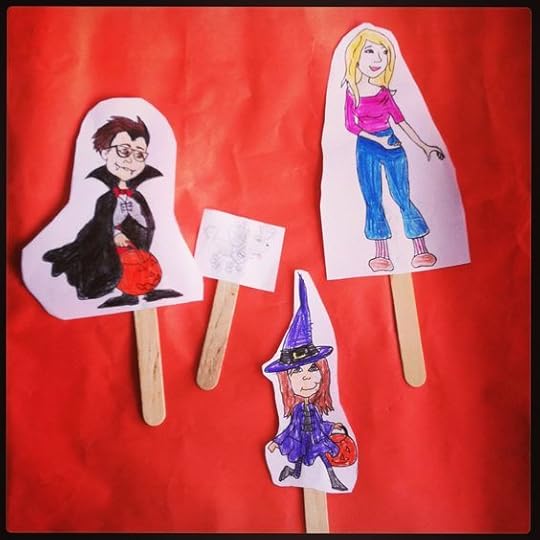Killian Wolf's Blog, page 2
December 12, 2018
Beyond the Sea- A Blank Street Writer’s Anthology

Blank Street Writer’s is one of Sheffield, Uk’s most active writing communities. I am proud to be a part of this group and have submitted one of my short stories, “A Night Out,” to this year’s Anthology.
The title of the book is named after Hannah Whiteoak’s winning entry to the Blank Street Short Story Slam. In it, are stories enjoyable within a range of genres from dystopian, dark fantasy, and psychological thriller.
Don’t wait to get your hands on this page turner. Now available on Amazon and Kindle, just in time for Christmas.
September 6, 2018
How I use Pinterest to Create My Character Descriptions
For over the past year, I have found Pinterest to not only be a fun way to collect ideas but a useful tactic in outlining my stories. I’ve been using it as a visual aid in picturing how I want my characters to look like, including how I want them to dress, and even where I want them set.
Pinterest brings one key aspect to the table that the notepad cannot:
It brings a visual catalog of what my character’s style is.
That’s not to say that I’ve stopped making lists though. It’s just simplified my process and has added a lot more fun. This is what I do:
First, I make a list of everything I want to include in my novel. My character’s descriptions, each of their styles (If I don’t know some of them upfront, then I know looking at different styles will help me decide), from clothing to hair color, hairstyles, hobbies, and work. I also make a board for the season it will be, including holidays, and the location my scenes take place.
Pinterest offers the opportunity to catalog a character’s sense of style, hobbies, and interests. This can even lead to the development of attitudes as some clothes resemble certain characteristics of personalities.
I then add these visual descriptions as a background for my characters, even the minor ones. It’s the subtle details that bring your characters to life. This is also true with their surroundings.
Maybe your character is a home decorator. You can have a board filled with home improvement pins to give you visual aid over what they might be doing, or planning in a given scene. Maybe your character is a student and lives in a dorm, have a board solely for dorm decorating. A board for nursing can help with research and terminology, as well as giving insight into the many obstacles and conversations nurses have each day.
In my series Reapers of the Veil, my main character Addison Brooke is a live-in nurse in the Florida Keys. At first, she struggles to find a position right out of university until one night she receives a mysterious phone call from an unknown caller, beckoning for her to come in for an interview. Desperate for an income, she takes the job in a mansion in Tavernier Key which ends up being haunted. If you want to check out my Reapers of the veil Inspiration board click HERE.
Developing my character’s wardrobe was both fun and a little challenging. What do you wear to an interview in 90 degrees Fahrenheit in South Florida? Well, you would die from heat from wearing a blazer and stockings like you would wear anywhere else in the country or in the UK! It just wouldn’t make sense, would it?
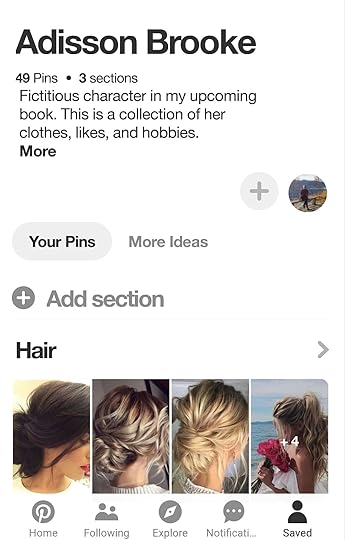 My Character style board
My Character style boardI went to Pinterest for help and collected pictures of her normal day to day wear, as well as some nice interview clothes for hot weather, and of course scrubs that fit her personal style.
The same can be done with hair color, type, and styles. As well as skin tones, eye color, etc. You get the idea. It’s become a fun little trick of mine to add a visual on how I want to create. Pretty soon, her character came to life! Not only through my book, but through the help of Pinterest’s visual aids.
Scenes
Lately, I’ve been collecting images of places for my scene developments and my characters whereabouts. It almost feels like I’m collecting pins for a vacation I want to take one day. There are so many things you can add in your story that can give it an extra detail of their location. Look for articles that talk about vacation hot spots, hobbies, even places to stay away from. This might give insight into some grimey alleyways your character might walk into- this is especially helpful if you’re writing in the crime or horror genre.
Background information and possible dialogue can be inspired by this too. This really helps if you’re writing about a place you’ve never been to before.
I for one grew up in the Keys but I still looked to see what’s changed and what there is to do these days. For one of my short stories, Anatoly, I created a board with images of Byzantine art, since my character starts off inside a Byzantine church and I wanted to describe details of the walls.
This does two things for me. It helps me design my stories world and characters and it gives me things to pin about, which help with my marketing.
How do you work on our character descriptions? Please share in the comments below!
Happy Writing!
Killian
September 4, 2018
My Ideal Writing Schedule that works for Me!
My Ideal Writing Schedule that Works for Me!
Working on being an author almost requires a talent in juggling all on its own. In today’s market, we have so much to work on that requires writing just to self promote. You start to feel like you’re taking time out of the novel, or manuscript that’s important to you. We have a blog to manage, writing and editing our novel, writing short stories, and not to mention all the social media we have to keep up with! When do we ever have time to publish, or send to literary agents? Let alone finish the damn thing! In reality though, all the writing we do benefits our writing style and practice; the key is to organize.
Organization is key. I like to have a list of everything I need to do and then an hourly schedule of how I intend on executing that list each day.
I’m a bit old fashioned and still like to hand write things down. I don’t mean that I write my stories or manuscripts by hand of course, but for my daily planning, I organize myself with a planner that I keep by my laptop. You might want to use google docs, or a notepad on your phone and that’s fine too. Personally, I like that my planner, open to the page, is visible and acts as an easy reminder.
At the moment. I have the ideal writing schedule because I’m in between sites. As an archaeologist, I’m either up really early which rules out writing in the morning and working until 4pm or not working at all and waiting for the next Archaeological site to begin. When I am working, I give myself one to two hours each day after work to just work on my manuscript, and alternating between days of whether I am going to write a blog post or work on a short story. Sometimes, I leave the short story writing for the weekends.
My Writing Schedule for while I’m working is as follows:
Get up, get dressed, grab coffee and leave to go to work7:30 AM-4PM- At work5-6PM- Getting home, depending on how far the site is from home6PM- Wind down, shower, make some tea and sit down at my desk6:30/6:45-8:00- Just work on manuscript8PM- Dinner from my crockpot will be ready, eat dinner with my hubby and relax
It’s a rush and not ideal, but it’s what the schedule looks like for most. Until that time comes around again, my schedule is a lot more flexible and looks something like this:
9AM- Work on manuscript until lunch timeBreak for lunch around 12:30-1:00 PMWork on blog post and submit onto blogTake an exercise break5PM-6PM- Work on a short story or enjoy some freestyle writing time. This is the time to work on new ideas that I could possibly publish as a short story for an e-book or kindle
No matter what my schedule looks like, I treat my writing time as either a full time job when I have the time or like a part time job when I’m working full time.
I like to give myself a few hours to work on whatever portion of my draft I’m working on in my manuscript. Currently I am on draft three of my novel, so I will work on that in the morning until lunch.
After my lunch break, I will quickly draft out my next blog topic and then revise and edit until I’m happy enough with it, then I’ll gather my images and start uploading to my blog.
Set goals. By when do you want to finish your manuscript? How many short stories do you want to have written by the end of the month or year? I like to set goals on myself because it makes the completion of my goal real. Marking them down on a calendar also works for me.
At the moment I am working on my manuscript, trying to get through my third draft by working on one chapter a day. If I do more before lunch, then perfect. If not, it’s okay, I’m sticking to my plan.
Set daily word count goals a day, whatever you do just make sure you make the most out of your time. Whether it’s to write 200 words or 1,000 words, make sure to follow through. When I was writing my first draft, I didn’t spend hours thinking of the best words, or the best way to say something. I didn’t think about which scenario should come first, and how I wanted to describe the weather. I saved that for my second draft. Draft one was just getting my outlined more detailed, regurgitating the story- if you will. Worry about tightening the point of view in your later drafts. If not, just writing the first draft could possibly take years.
On draft three, I am re-reading and re-writing every word. Making sure I have my characters in the point of view that I need them to be and embellishing my scenes.
Sometimes, I’ll get an idea for a short story, or another novel and I’ll have to stop and open up my ideas page on google docs and jot it down. This might take a few minutes or longer, depending on how it develops. Don’t beat yourself up over loss of time if this happens to you. This is perfectly normal and it’s great to keep building your ideas and setting up your next stories. Setting up daily goals and organizing with a schedule provides the best way of utilizing your time effectively.
Create your workspace. I’m not the type of person who can write anywhere in the house, just like I’m not the type of person who can just fall asleep anywhere. I need to feel at peace, and need to be comfortable. I find myself to be easily distracted so my desk needs to be empty, and not cluttered with papers and things I need to do. The things I need to do need to be exactly where I need them to be! In an orderly fashion, and waiting to be ticked off my list at their appropriate time! I guess you can say I’m a bit of a control freak. But hey, it works for me!
The desk itself has a candle, my laptop, and a coaster for my coffee. On the side will be my organized stack of papers. I will admit that occasionally I have a paint set sprawled out for those times I want to take an art break from writing to ease my mind, but paints don’t bother me.
Otherwise, if I would sit down with a limited time to write and find myself staring at things I need to get done, then my manuscript will just be pushed to the back burner- exactly where I don’t want it.
That’s it! Not so bad, is it? Please feel free to share your writing schedule in the comments below! I’d love to hear some pointers that could help out with my writing schedule as well!
Thanks!

